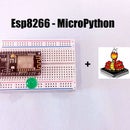Introduction: NAS (Network Attached Storage) Using Raspberry Pi
Network-attached Storage or NAS for short is a really good device to have if you are dealing with a large number of files and data. I have so much of my work-related content on my PC Internal HDD that it leaves not much room for my personal data, so I usually store them on an external HDD, but each time someone in my family needs any file or photos I have to plug in and copy files from my HDD.
To solve this I decided to use a Raspberry Pi 3 I had, this would make a cheap NAS device and it is easy to set up too. So in this instructable, I'm going to show you How to create a NAS using the Raspberry Pi.
Step 1: Components to Build
Here is what you will need to get you NAS up and running,
- Raspberry Pi
- External HDD
- Micro SD Card 8Gb or above
- Micro USB Cable
- Ethernet Cable
Step 2: Installing OS
For the NAS or Network Attached Storage, we will be using OpenMediaVault OS, which is a free OS for setting up in homes and small offices. It works on various Linux platforms. It supports various protocols like SFTP, FTP, etc it even has BitTorrent Client.
To install the OS you will need to download the Win32 Disk Imager and download the OpenMediaVault OS.
Step 3: Writing and Booting the OS
To write the OS on the disk open up win32diskimager and select the OS image file and then select the micro SD card drive to be installed. After writing the OS the win32diskimager will give you a write successful pop up.
Next, you need to plug the SD Card into the Raspberry Pi and it will boot into the OS.
Step 4: Getting Started
For inital setup you need to attach a monitor and keyboard to the raspberry pi and when you boot up you can login using the default username and password which is admin and OpenMediaVault. Next, you should be able to setup the network and see the IP address of the raspberry pi.
After the network setup you can run the raspberry pi as a headless device i.e, you no longer need a keyboard and mouse as you can access the pi from any PC connected to the same network using the ip address of the raspberry pi.
Step 5: Adding Folders
You should able to mount your HDD drive from storage and Filesystem in the left side menu, and you should see all your drives listed here you can mount and un-mount any driver here and to share any folder on your drives, from Shared folders in the Access Rights Management tab side menu.
Step 6: Going Further
If you like this project and wish to know many Raspberry Pi related Projects comment below.
I'll be happy to do many such projects for you.
If you have any queries, feel free to leave a comment below or PM me and I would try to help you.











